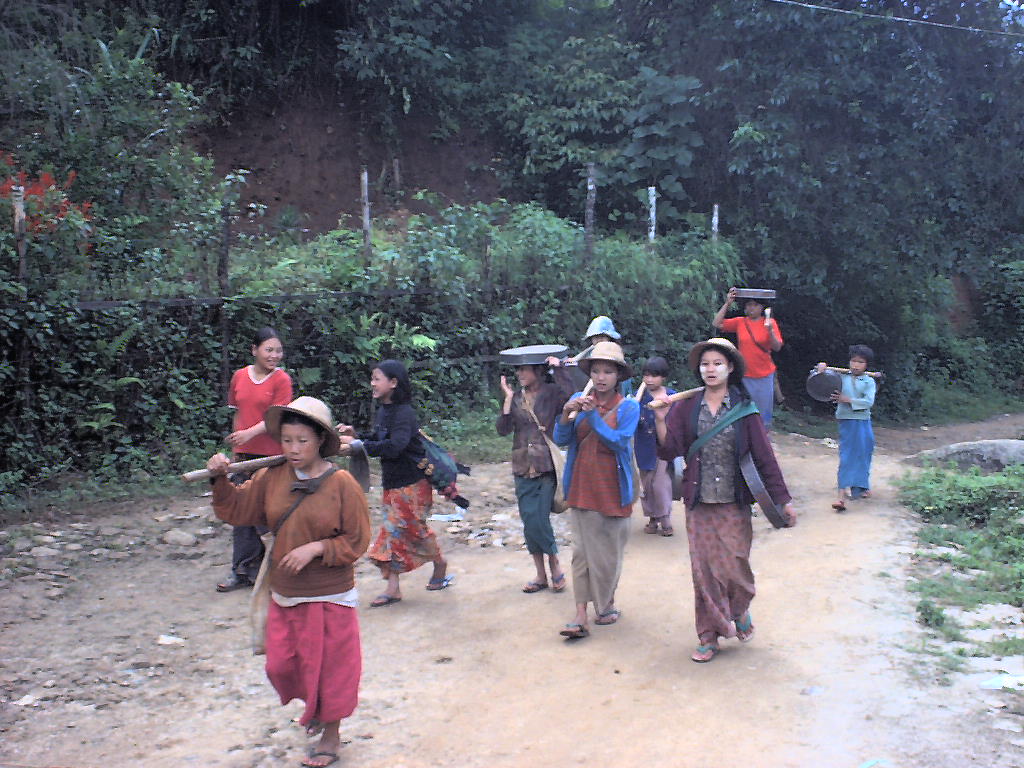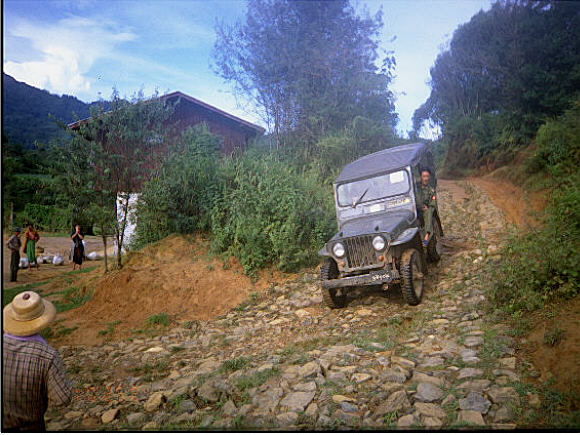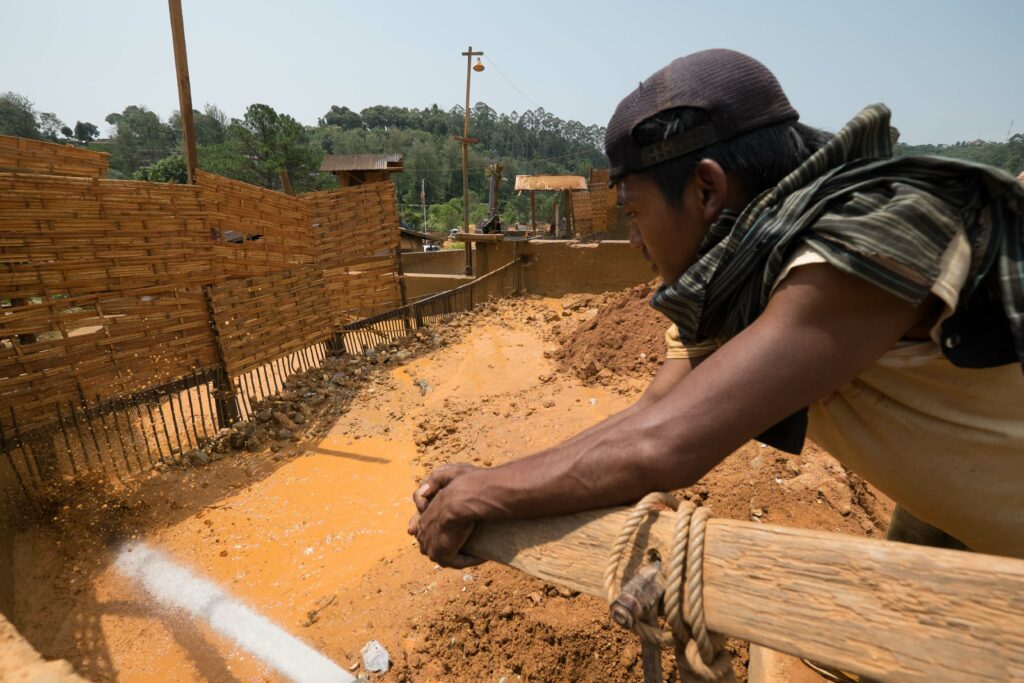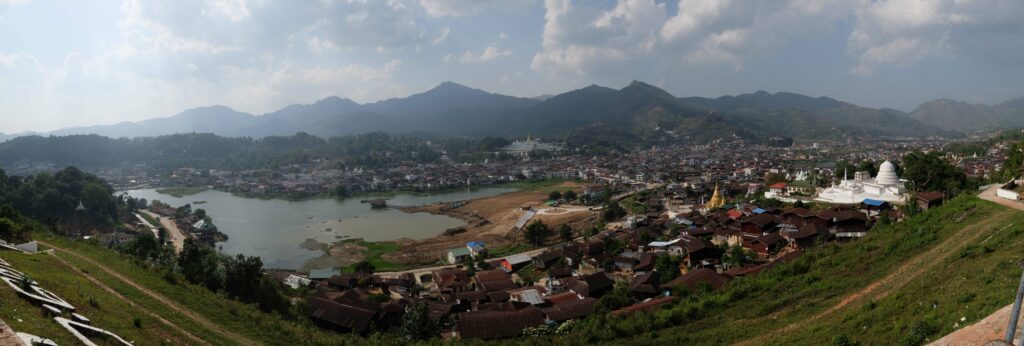The Mogok Story

At the beginning of time, so the legend goes, the giant serpent Naga laid three eggs. From the first egg came the King of Pagan. From the second, the Emperor of China. And from the last egg, all the Rubies. For more than 2000 years, the Mogok Stone Tract in Upper Burma – an isolated area, where mountainous jungle and deep valleys form a natural border with the Shan Plateau, and the Kyatpyin, Kathe and Luda Valleys enclose the major mining areas – has been renowned as a source of excellent rubies and spinels, among other stones. Some believed this to be the mythological “Valley of the Serpents” where large, precious gems lay in a deep ravine populated by deadly snakes. The only way to get these gems, considered “the fire and blood of Mother Earth”, was to throw lumps of meat into the ravine; stones would become attached to the meat, which was then carried out of the ravine by vultures. After the vultures had eaten, the gems were retrieved from the birds’ droppings.
In 1568, the first Englishman to visit Mogok, Ralph Fitch, vividly described it as “the place where they find the rubies, sapphires, and spinels”, also noting that “none may go to the pits but only those which digge them”. More than 400 years later, in 1997, Dr. George Harlow, a mineral and gem specialist from the American Museum of Natural History, visited Mogok: “I don’t know any other place on the entire planet that has such a diverse suite of minerals”. He declared it a “jaw-dropping experience”.

The history of Mogok has always revolved around the gem trade. In 1597, the Burmese King, Nuha Thura Maha Dhama Yaza, annexed the area; at one point he ordered all the people in one village burned alive when he discovered that a miner had secretly sold a stone to a merchant rather than giving it directly to the king. The King’s harsh policies drove out many of the miners and Mogok fell into obscurity until 1886, when the British Army took over Upper Burma. Three years later, the Burma Ruby Mines Company was established with Edwin Streeter, a London-based jeweler who was the driving force behind a group that included prominent financial figures of the time such as the Rothschilds of London. High expectations met a humid and muddy reality, but the British were undeterred: realizing that the richest deposits were under the village of Mogok itself, they proceeded to relocate the entire village and followed up by building a 400-kilowatt hydroelectric station, (in later days electricity was the only product of the Burma Ruby Mines Company), five washing mills and a mile-long tunnel carved out of solid rock. Bustling with activity, thousands of tons of earth were processed through the washing mills daily.

In 1908, the appearance of the first man-made stone, the “Verneuil Synthetic Ruby”, spread panic among ruby buyers. Sales declined dramatically. Global slowdown caused by the First World War took its toll as well, and the Burma Ruby Mines Company suffered heavy losses. In 1929, an unusually heavy wet season brought torrential rains that destroyed most of the electrical equipment and the tunnel. The company survived until 1931, when it returned its lease to the government. In the aftermath of the collapse, fingers were pointed at the management which, at one stage, had been running the mining operations with no discernible logic: mining schedules and locations were chosen randomly. Others blamed a rising competitor, De Beers, for whom massive production of fine rubies could be a serious hindrance to their promotion campaign of diamonds.
Mogok’s miners and traders, meanwhile, went back to their old methods and business continued as usual, stopping only during the 1942-1945 Japanese occupation of Burma. After the Second World War, small-scale mining flourished again, but then nearly came to a halt in 1963 when the Burmese government began its nationalization program for all of the country’s principal industries, including mining.
In the heyday of socialism, private dealing or even possession of gemstones was illegal. At the mines, army officers and generals replaced experienced operators. The results were disastrous: overall output declined to zero, the area was in total disarray, and illegal mining and smuggling increased.
Things started to change after the civil uprising of 1988. An ancient rival, Thailand, cashing in on foreign investment and know-how, which was helping to liberalize its economic policies, started showing signs of growing economic success. This, and that the Thai ruby industry was using a hefty slice of Mong Hsu material, caused the old generals to reconsider the benefits of isolationism. But reaching Mogok remained challenging, especially for foreigners. One by one, single dealers would come to Mogok and buy various lots, with Mogok’s inaccessibility making these gems even more precious to collectors and buyers.

These days, the Myanmar Gems Enterprise is the official government body in charge of overseeing the gem industry in Myanmar (Burma). Ruby and sapphire production in Mogok is mostly in the hands of larger private companies that work closely with the government, according to the Myanmar Times newspaper, although a project is ongoing to set aside 1-acre small-scale mining blocks for long-term Mogok residents. And while Mogok in 2015 is a much different place than it was even four years earlier – the WWII-era jeeps have disappeared, residents carry mobile phones and native mining methods have evolved into larger, mechanical operations – foreigners are still required to obtain a permit before visiting, and it is still difficult to reach. As well, the gemstone trade in Mogok remains somewhat untamed, even now retaining a somewhat “wild west” vibe.
When Bangkok-based gemologist and author Richard Hughes was interviewed by the Wall Street Journal regarding efforts to monitor the gemstone trade more closely, he said “Gemstones are different from other kinds of mining . . . There’s a high concentration of value in very small areas and relatively few stones. Plus, only people, not machines, can separate valuable specimens from worthless ones—and that includes the artisanal miners who now have much of the action. If big companies try to impose more order, he says, “there’s always going to be people who can get around it.”
Ultimately, these precious gems will become scarcer and scarcer. First, there are fewer and they are getting harder to find. Second, large-scale mining is not considered practical or cost-effective for most of the places where colored gemstones are found, including Mogok. And, although Myanmar is opening up economically, a report from the Oxford Business Group notes that “despite the undeniable growth potential of the country’s gem industry, particularly in downstream processing, questions remain around accessibility, with many areas off limits due to armed conflict between the military and a number of rebel groups.”

Yet, after thousands of years, the allure of colored gemstones such as spinels, sapphires and rubies is unlikely to fade away. Mogok, despite its challenging environment and relatively inaccessibility, will continue to draw collectors, individuals and experts from across the globe who are captivated by the beauty of the earth’s sparkling “fire and blood”.
SOURCES:
This short article was based mainly on a new book “Ruby & Sapphire” by Richard W. Hughes.
The book weighs 2.4 kilos and is well worth its weight in rubies and spinels. Detailed, accurate, rich and colorful, it contains thousands of references and hundreds of excellent photos. Those familiar with Hughes writing will find here yet another example of his peculiar and sometimes controversial sense of humor. Those who are not, should not miss this chance to make his acquaintance.
- http://www.gia.edu/gia-news-research-expedition-to-the-valley-of-rubies-part-2
- http://www.gia.edu/gems-gemology/spring-2014-pardieu-jedi-spinels-in-mogok
- https://www.treasury.gov/resource-center/sanctions/Programs/Documents/burma.txt
- http://www.mmtimes.com/index.php/business/17662-ruby-miners-leave-mogok-as-Chinese-demand-plummets.html
- http://www.mmbiztoday.com/articles/mogok-miners-may-see-land-redistribution
- http://www.ruby-sapphire.com/r-s-bk-burma.htm
- http://www.ruby-sapphire.com/pigeons-blood-mogok.htm
- http://www.amnh.org/explore/news-blogs/from-the-field-posts/ruby-land-the-gems-and-geology-of-myanmar-s-mogok-stone-tract/
- http://www.mining.gov.mm/MGE/Default.asp
- http://www.pbs.org/wgbh/roadshow/fts/boise_201304A49.html
- http://m.palagems.com/ruby-mines-mogok/
- http://www.travelinggeologist.com/2014/11/mogok-burmese-valley-of-rubies-and-sapphires-with-mike-searle/
- http://www.wsj.com/articles/SB10001424127887323372504578466933124542820
- http://www.oxfordbusinessgroup.com/overview/treasure-trove-complex-geography-provides-diverse-mix-rich-minerals
